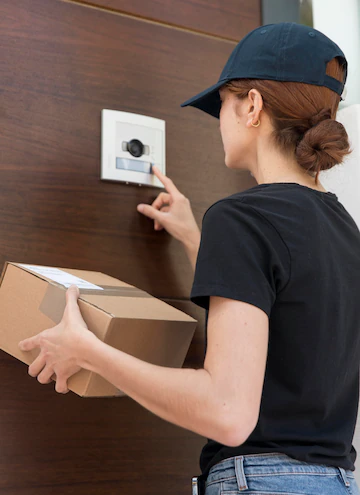Old Me New Me: - Door Bell
- Omkar Abhyankar

- Feb 21, 2023
- 3 min read
Updated: Feb 22, 2023

A smart doorbell is a doorbell that is equipped with advanced technology to enhance its functionality beyond that of a traditional doorbell. It typically includes a camera, microphone, speaker, and a Wi-Fi connection that allows it to connect to the internet and transmit data to a user's smartphone or other devices.
Smart doorbells often have motion sensors that can detect movement near the front door and trigger the camera to start recording. They can also send notifications to the user's smartphone or other devices when someone rings the doorbell or when motion is detected. Some smart doorbells also feature facial recognition technology, allowing them to identify specific individuals and alert the homeowner accordingly.
Smart doorbells are popular for their ability to enhance home security and convenience. Homeowners can remotely view and communicate with visitors, even when they are not at home. Some models also offer the ability to unlock the front door remotely, which can be useful for letting in family members or trusted individuals while the homeowner is away.
Comparison of Traditional Door bell and Smart Door bell
Traditional doorbells are simple devices that are designed to alert homeowners when someone is at their front door. They typically consist of a button that is pressed by the visitor, which triggers a chime or other sound inside the house. Traditional doorbells do not have any advanced features, such as a camera or Wi-Fi connectivity.
On the other hand, smart doorbells are equipped with advanced technology that allows them to do much more than traditional doorbells. They typically include a camera, microphone, speaker, and Wi-Fi connectivity that enables them to connect to the internet and transmit data to a user's smartphone or other devices. Smart doorbells can detect motion and send alerts to the homeowner's device, even before someone rings the doorbell. They also have features like two-way audio, night vision, and facial recognition technology that traditional doorbells do not have.
One of the main benefits of smart doorbells is that they provide an extra layer of security. Homeowners can see and communicate with visitors remotely, even when they are not at home. This can help deter would-be burglars or package thieves. Smart doorbells can also integrate with other smart home devices, such as smart locks and security cameras, to provide a more comprehensive security solution.
Feature | Traditional Doorbell | Smart Doorbell |
Video Capability | None | Yes |
Two-Way Audio | None | Yes |
Motion Detection | None | Yes |
Facial Recognition | None | Yes |
Wi-Fi Connectivity | None | Yes |
Integration with other smart home devices | None | Yes |
Night Vision | None | Yes |
Remote Access | None | Yes |
Price | Less expensive | Expensive |
As you can see, smart doorbells offer several features that traditional doorbells do not, such as video capability, two-way audio, motion detection, facial recognition, Wi-Fi connectivity, integration with other smart home devices, night vision, and remote access. Smart doorbells are typically more expensive than traditional doorbells, but they provide additional functionality and convenience that many homeowners find useful.
Overall, while traditional doorbells serve their basic purpose of alerting homeowners to visitors, smart doorbells offer advanced features and functionality that can enhance home security and convenience.
Future of Smart Door bell
The future of smart doorbells looks bright, as the technology continues to evolve and new features are added. Here are some potential advancements we may see in the future of smart doorbells:
1. Improved facial recognition: Facial recognition technology is already being used in some smart doorbells to identify people who come to the door. In the future, we may see even more advanced facial recognition algorithms that can identify people more accurately and quickly.
2. Augmented reality: As smart doorbells become more sophisticated, they may incorporate augmented reality (AR) technology. This could allow homeowners to see virtual images of their visitors or to project a digital "welcome" message on the ground in front of their door.
3. 5G connectivity: The adoption of 5G technology could enable smart doorbells to transmit even higher-quality video and audio, allowing for more detailed surveillance and clearer communication.
4. Integration with other smart home devices: Smart doorbells may become even more integrated with other smart home devices, such as smart locks, security cameras, and voice assistants. This could allow homeowners to control all of their home security devices from a single app or through voice commands.
5. Advanced sensors: Smart doorbells may incorporate advanced sensors that can detect a wider range of movements, sounds, and environmental factors. For example, they could detect the sound of breaking glass or the presence of smoke or carbon monoxide.
Overall, the future of smart doorbells is likely to be characterized by even greater levels of integration, intelligence, and convenience, making them an even more essential part of home security and daily life.
Resources
Gif resource:- Interfree Website
















Comments